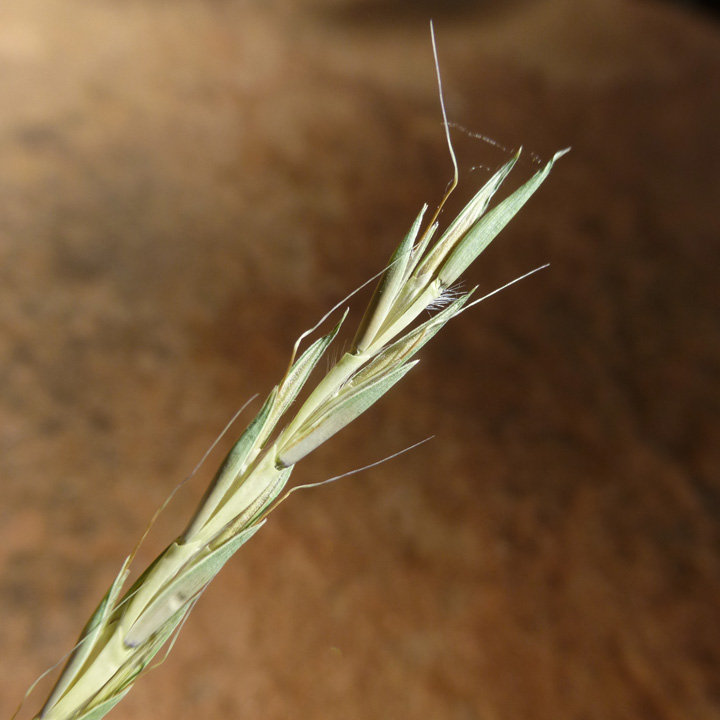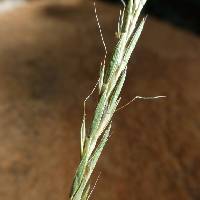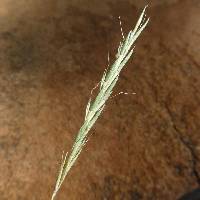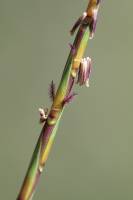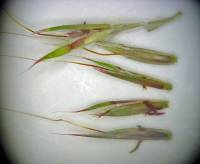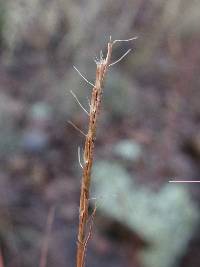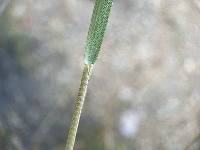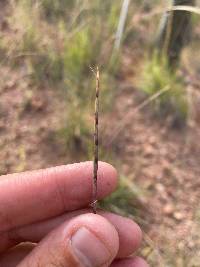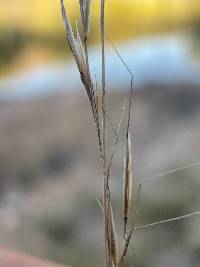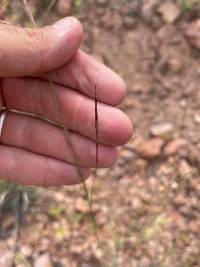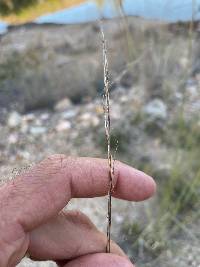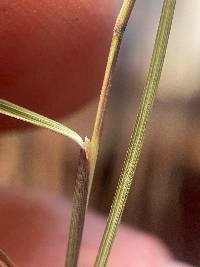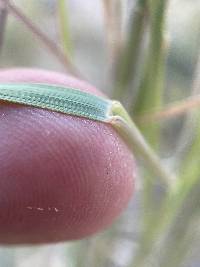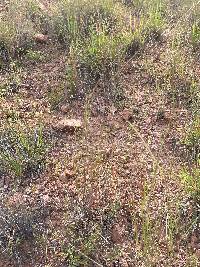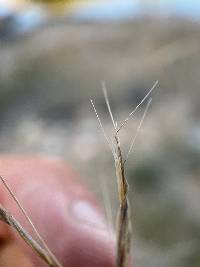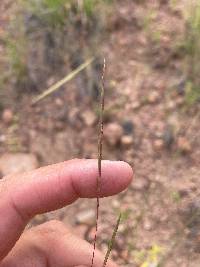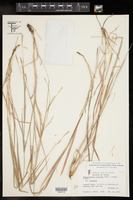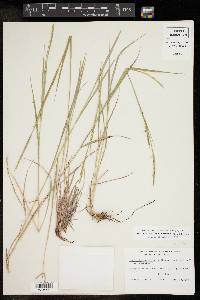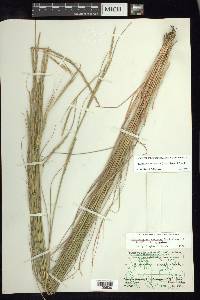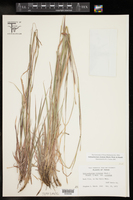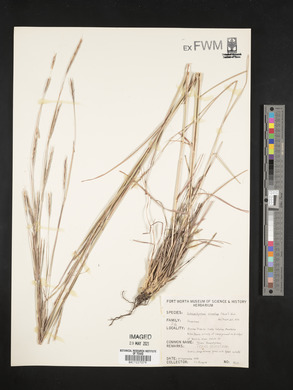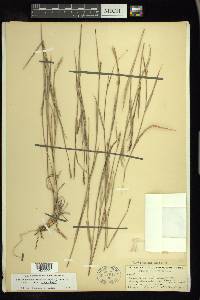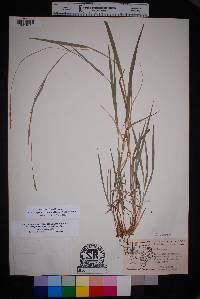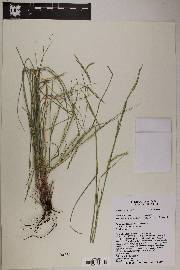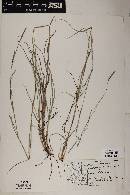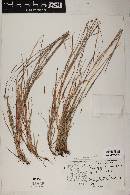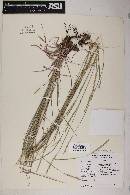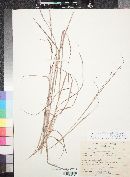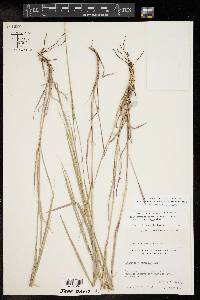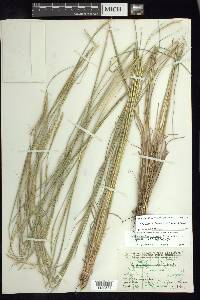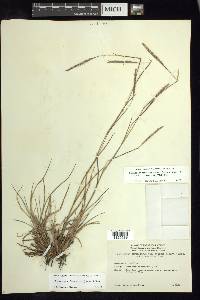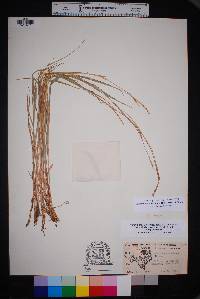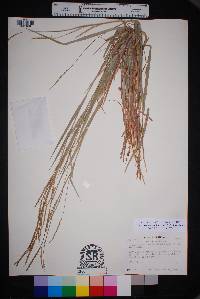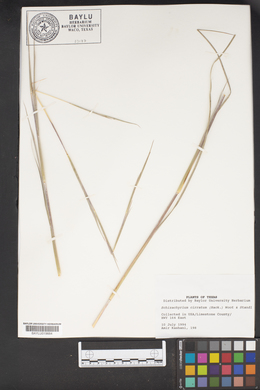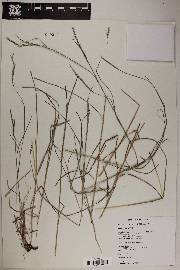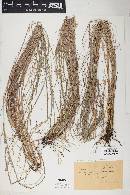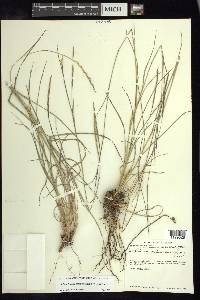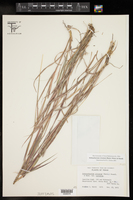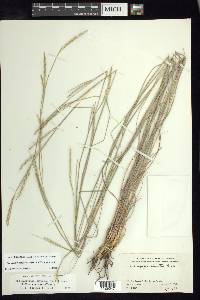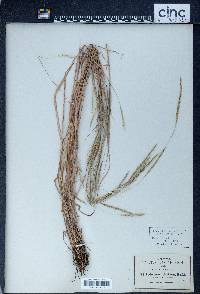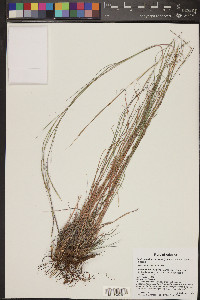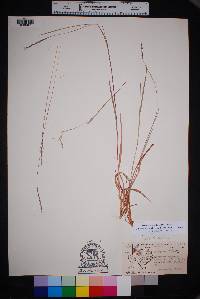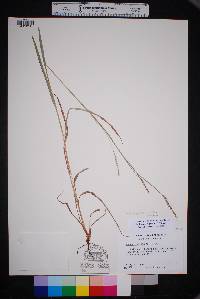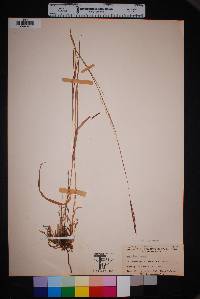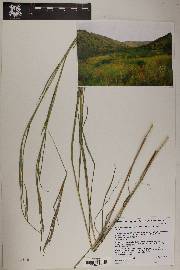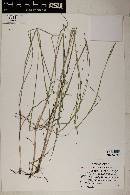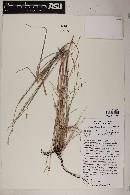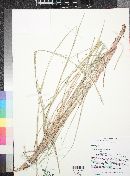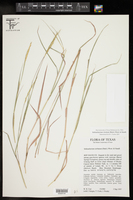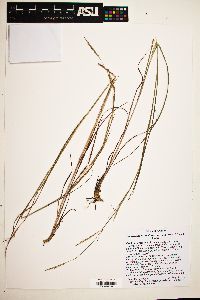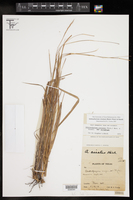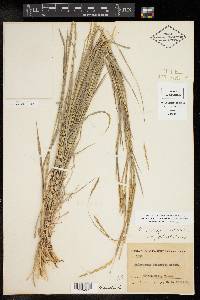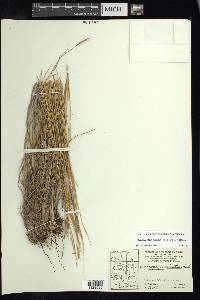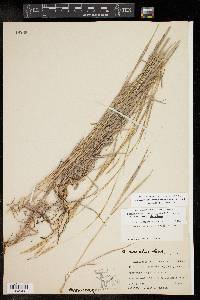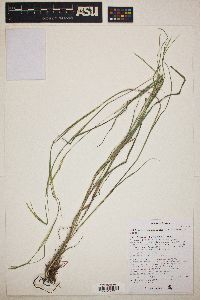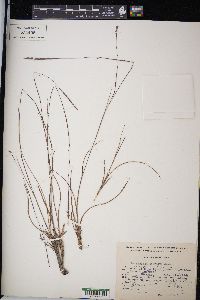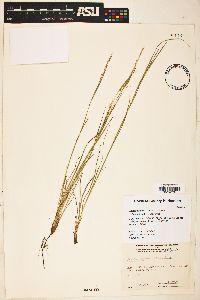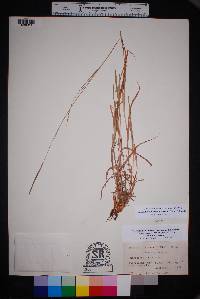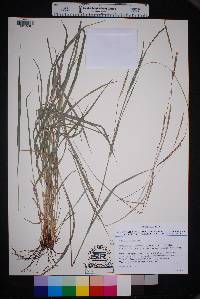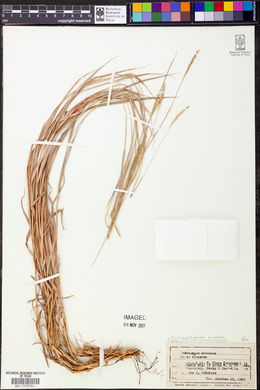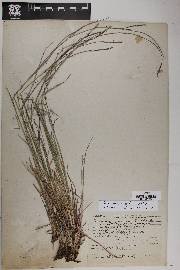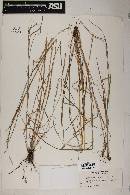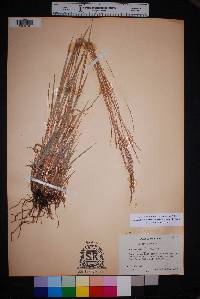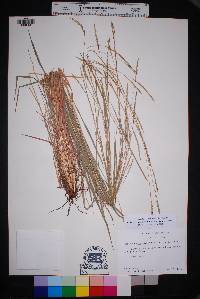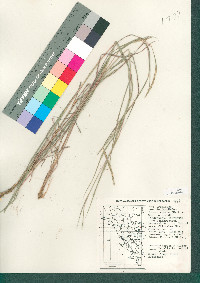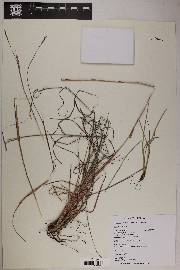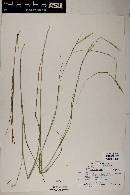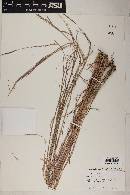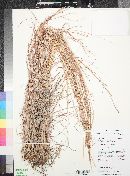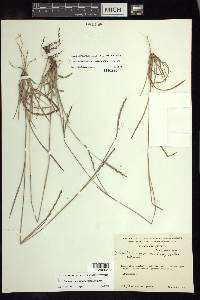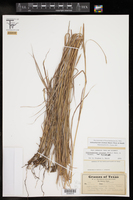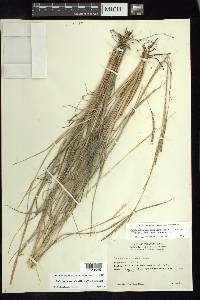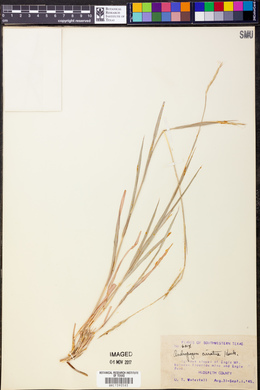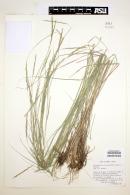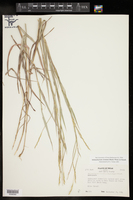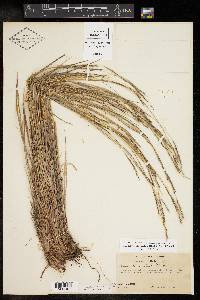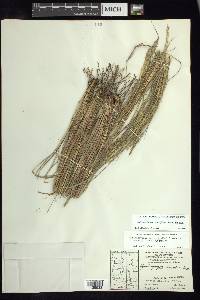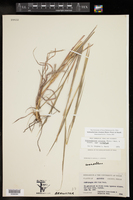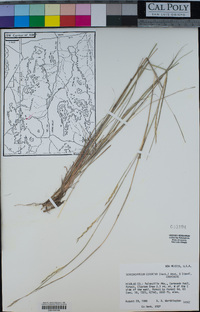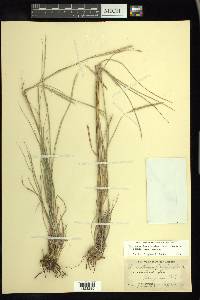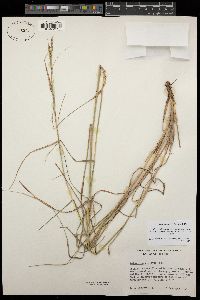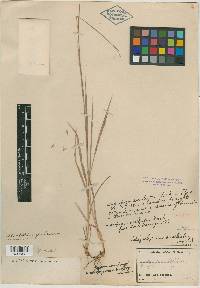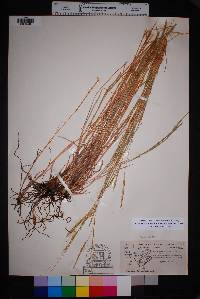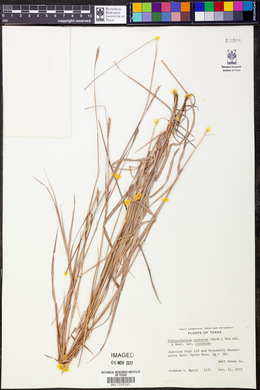
|
|
|
|
Family: Poaceae
Texas bluestem, more...Texas False Bluestem, Texas beardgrass, Texas Schizachyrium
[Andropogon cirratus Hack., moreAndropogon lolioides E. Fourn., Schizachyrium tenerum var. cirratum (Hack.) Roberty, Sorghum cirratum (Hack.) Kuntze] |
Plants cespitose or shortly rhizomatous. Culms 31-75 cm, often decumbent, not rooting or branching at the lower nodes, glabrous, glaucous, sometimes purplish. Ligules 1-2.5 mm; blades 6-17 cm long, 2-4 mm wide, glabrous, without a longitudinal stripe of white, spongy tissue. Rames 4-6 cm, usually exerted, straight, often somewhat stiff, not flexuous, appearing linear; internodes straight, with a tuft of hairs near the base, elsewhere glabrous or ciliate on the margins. Sessile spikelets 8-10 mm; calluses 0.3-0.6 mm, hairs 0.5-1.2 mm; glumes glabrous or scabrous; awns 13-24 mm. Pedicels 3.5-5 mm long, 0.2-0.5 mm wide at the base, widening to 0.5-1 mm, straight, with a tuft of hairs at the base, distal 1/2 usually ciliate on 1 side, sometimes on both sides. Pedicellate spikelets 6-8 mm, about as long as the sessile spikelets, usually staminate, sometimes sterile, unawned. 2n = 20 (for var. cirratum). Schizachyrium cirratum grows on rocky slopes, mostly at elevations of 5000 feet or higher, from southern California to western Texas into Mexico, and is known from South America. It is an excellent forage grass. Plants in the Flora region differ from those in central Mexico in being essentially non-rhizomatous and in having glabrous rame axes and pedicels that are ciliate only on the distal half. Perennials, Terrestrial, n ot aquatic, Rhizomes present, Rhizome short and compact, stems close, Stems nodes swollen or brittle, Stems geniculate, decumbent, or lax, sometimes rooting at nodes, Stems caespitose, tufted, or clustered, Stems terete, round in cross section, or polygonal, Stem internodes solid or spongy, Stems with inflorescence less than 1 m tall, Stems, culms, or scapes exceeding basal leaves, Leaves mostly cauline, Leaves conspicuously 2-ranked, distichous, Leaves sheathing at base, Leaf sheath mostly open, or loose, Leaf sheath smooth, glabrous, Leaf sheath and blade differentiated, Leaf blades linear, Leaf blades very narrow or filiform, less than 2 mm wide, Leaf blades 2-10 mm wide, Leaf blade margins folded, involute, or conduplicate, Leaf blades mostly glabrous, Leaf blades glaucous, blue-green, or grey, or with white glands, Ligule present, Ligule an unfringed eciliate membrane, Inflorescence terminal, Inflorescence lateral or axillary, Inflorescence with 2 or more spikes, fasci cles, glomerules, heads, or clusters per culm, Inflorescence single raceme, fascicle or spike, Flowers bisexual, Spikelets pedicellate, Spikelets sessile or subsessile, Spikelets laterally compressed, Inflorescence or spikelets partially hidden in leaf sheaths, subtended by spatheole, Spikelet less than 3 mm wide, Spikelets with 1 fertile floret, Spikelets with 2 florets, Spikelets paired at rachis nodes, Spikelets in paired units, 1 sessile, 1 pedicellate, Pedicellate spikelet rudimentary or absent, usually sterile, Spikelets bisexual, Spikelets disarticulating below the glumes, Spikelets falling with parts of disarticulating rachis or pedicel, Rachilla or pedicel glabrous, Glumes present, empty bracts, Glumes 2 clearly present, Glumes equal or subequal, Glumes equal to or longer than adjacent lemma, Glume equal to or longer than spikelet, Glumes keeled or winged, Lemmas thin, chartaceous, hyaline, cartilaginous, or membranous, Lemma 1 nerved, Lemma glabrous, Lemma apex de ntate, 2-fid, Lemma distinctly awned, more than 2-3 mm, Lemma with 1 awn, Lemma awn 1-2 cm long, Lemma awn from sinus of bifid apex, Lemma awn twisted, spirally coiled at base, like a corkscrew, Lemma awn once geniculate, bent once, Lemma margins thin, lying flat, Lemma straight, Stamens 3, Styles 2-fid, deeply 2-branched, Stigmas 2, Fruit - caryopsis.
FNA 2007, Gould 1980 Common Name: Texas bluestem Duration: Perennial Nativity: Native Lifeform: Graminoid General: Caespitose or shortly rhizomatous perennial grass, 31-75 cm tall, often decumbent but not rooting or branching at the lower nodes, glabrous, glaucous, reddish to sometimes purplish. Vegetative: Blades 6-17 cm long, 2-4 mm wide, glabrous; sheath smooth, round, open; ligule 1-2 mm long. Inflorescence: Terminal inflorescences, each consisting of a single pedunculate rame bearing stalked and sessile spikelets; rames 4-6 cm long, exserted from uppermost leaf sheath, straight and somewhat stiff, not flexuous, appearing linear; internodes straight, with tuft of hairs at base, elsewhere glabrous or ciliate on the margins. Pedicellate spikelets 6-8 mm, about as long as sessile spikelets, unawned, on pedicels 3.5-5 mm, straight with tuft of hairs at base, usually ciliate on one side. Sessile spikelets 8-10 mm, 2-flowered, the lower floret reduced to a hyaline lemma, the upper floret bisexual; calluses 0.5 mm with hairs 0.5-1 mm; glumes glabrous or scabrous; upper (fertile) lemmas with once-geniculate awns 13-24 mm. Ecology: Found in steep, rock canyon slopes, oak woodlands, and forest openings, from 3,000-7,000 ft (914-2134 m); flowers August-October. Distribution: s CA, s AZ, sc NM, sw TX; south to s MEX. Notes: Schizachyrium is a genus of perennial bunchgrasses with inflorescences consisting of a single branch (rame) lined with spikelets that are grouped in pairs, one spikelet sessile and fertile, the other pedicillate and sterile or staminate. The genus is distinguished from the similar and related genus Andropogon by the solitary rames; Andropogon species usually have more than one rame per inflorescence. The Schizachyriums in the southwest are incredibly similar to each other and quite difficult to tell apart using simple field-friendly traits. S. cirratum is primarily distinguished from its local congeners by its inflorescences which appear glabrous to the naked eye (the rames and pedicels have hairs that are visible using a hand lens). In contrast, S. scoparius and S. sanguineum have copiously hairy glumes, the tufts white, several mm long, and visible to the naked eye. Also, S. cirratum has purple stigmas and purple anthers, while S. sanguineum has purple stigmas and yellow anthers, and S scoparium has yellow-white stigmas and purple anthers. Use caution, however, as this trait is only reliable when the plant is in full flower. As the flowers fade, so do the colors. Ethnobotany: Unknown Etymology: Schizachyrium is Greek word, meaning divided or cut chaff flower, while cirratum refers to having or carrying tendrils. Synonyms: Andropogon cirratus Editor: SBuckley 2010, FSCoburn 2014, AHazelton 2015 |
|
|
|

